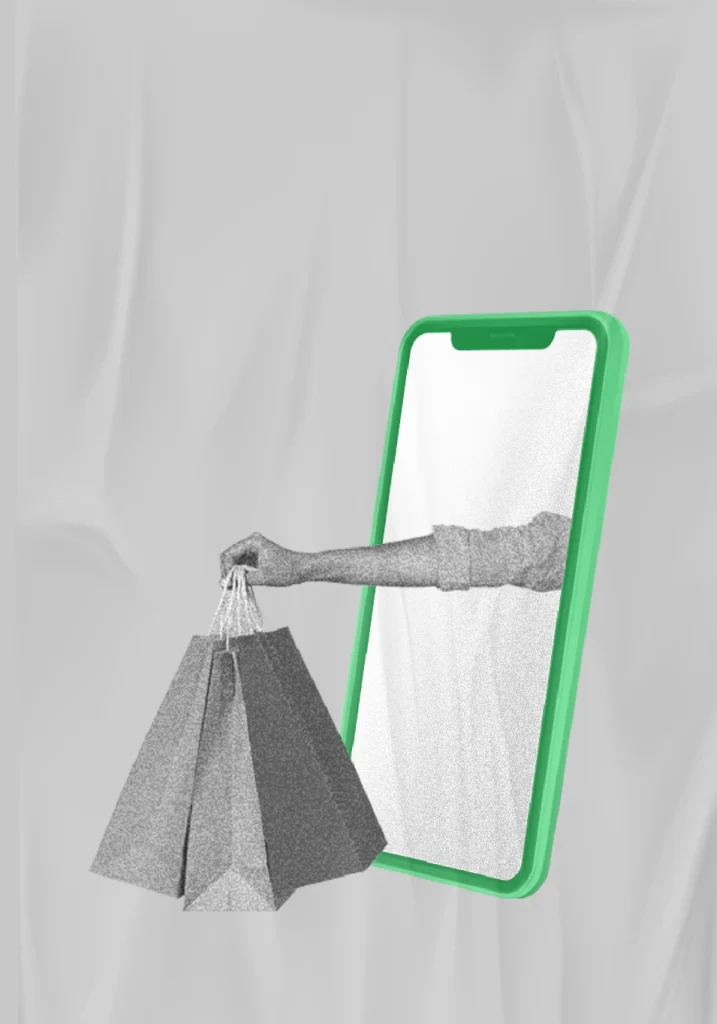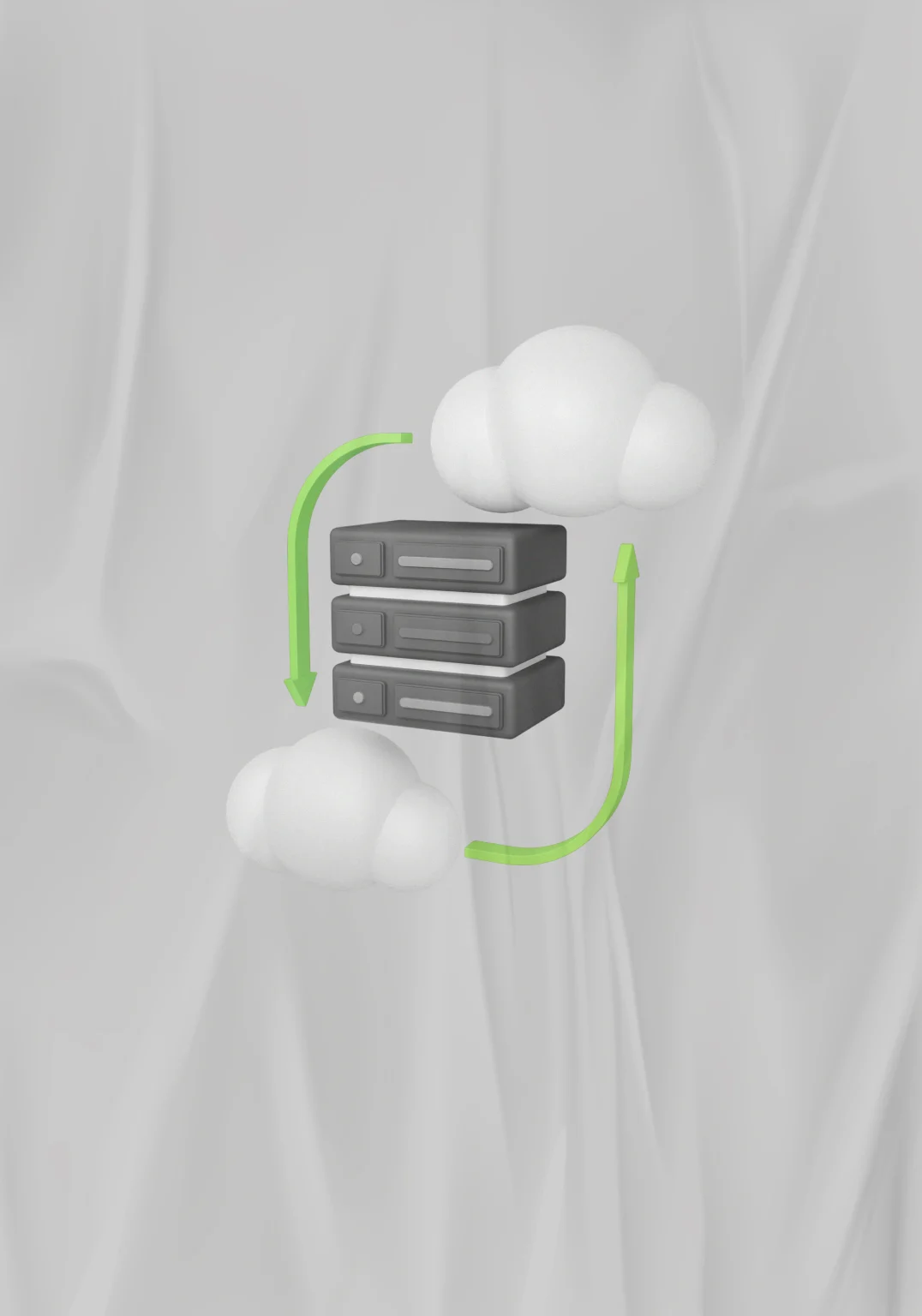If you’re starting an ecommerce business, odds are you’ll fall into at least one of these four general categories. Each has its benefits and challenges, and many companies simultaneously operate in several.
Knowing what bucket your idea fits in can help you think creatively about what your opportunities and threats might be.
B2C (Business-to-consumer)
B2C businesses sell directly to their end-users. Anything you buy in an online store as a consumer — from wardrobe and household supplies to entertainment — is done as part of a B2C transaction.
The decision-making process for a B2C purchase is much shorter than a business-to-business (B2B) purchase, especially for lower-value items. Because of this shorter sales cycle, B2C businesses typically spend less marketing dollars to make a sale while having a lower average order value and fewer recurring orders than their B2B counterparts.
B2C includes both products and services as well. B2C innovators have leveraged technology like mobile apps, native advertising and remarketing to market directly to their customers and make their lives easier.
B2B (Business-to-business)
In a B2B business model, a business sells its product or service to another business. Sometimes the buyer is the end-user, but often the buyer resells to the consumer. B2B transactions generally have a longer sales cycle, but higher-order value and more recurring purchases.
Recent B2B innovators have made a place for themselves by replacing catalogs and order sheets with ecommerce storefronts and improved targeting in niche markets.
In 2021, 60% of B2B buyers were millennials — nearly double the amount from 2012. As younger generations enter the age of making business transactions, B2B selling in the online space is becoming more important.
B2B2C (Business-to-business-to-consumer)
B2B2C stands for Business-to-Business-to-Consumer. It is a business model where a company sells its product or service in partnership with another organization to an end customer.
Unlike when you white label a product — where a company rebrands an item to present it as its own — the end customer understands that they are buying a product or using a service from the original company
B2G (Business-to-government)
Business-to-government (B2G) is an ecommerce model where a business sells and markets its products to government entities or public administrations — whether local, county, state or federal.
This model relies on the successful bidding of government contracts. A government agency will typically put up a request for proposal (RFP) and ecommerce businesses will have to bid on these projects.
While a more secure business model, B2G differs from other businesses or consumers. The bureaucratic nature of government agencies often leads to a much more glacial pace, which can limit potential revenue streams.
C2B (Consumer-to-business)
C2C ecommerce businesses — sometimes referred to as online marketplaces — connect consumers to exchange goods and services and typically make their money by charging transaction or listing fees.
C2C businesses benefit from self-propelled growth by motivated buyers and sellers, but face a key challenge in quality control and technology maintenance.
Online businesses like Craigslist, Walmart, Alibaba and eBay pioneered this model in the early days of the internet.
Value Delivery Methods for Ecommerce Innovation
A value delivery method is how a product is designed in order to bring the most value to customers who are using it. If your business model is the car, your value delivery method is the engine.
Here are some of the most popular delivery methods taken by industry leaders and market disruptors:
White label
White labeling is when a company brands and sells a product under its own name and logo, but it is manufactured or purchased from a third-party distributor. This can help boost brand visibility while minimizing manufacturing costs.
White labeling is popular within heavily reproduced industries such as fashion and cosmetics.
Private label
A private label product is one that a retailer gets produced by a third party but sells under its own brand name. The retailer controls everything about the product or products. That includes the product’s specs, how it’s packaged and everything else besides.
Private label products are then delivered to the retailer to sell. As far as consumers are concerned, they’re the company’s ‘own brand’ products.
Wholesaling
Wholesale ecommerce is a B2B ecommerce model where, instead of selling your products individually to consumers, you sell them in bulk and at a discount to other businesses — essentially as the intermediary between the manufacturer and the distributor or retailer.
In a wholesaling approach, a retailer will typically offer its products at a significant discount.
Dropshipping
One of the fastest-growing methods of ecommerce is dropshipping.
Typically, dropshippers market and sell items fulfilled by a third-party supplier, like AliExpress or Printful. Dropshippers act as middlemen by connecting buyers to manufacturers. Easy-to-use tools can allow users to integrate inventory from suppliers worldwide for their storefronts.
Selecting Your Ecommerce Business Model
As seen above, there are several different types of ecommerce business models and value delivery methods to choose from. Deciding on a business model can be difficult, so here are a few questions that can help you create a business plan that will set your company apart:
What are you selling?
An advantage of the online marketplace is that there will always be a market for what you want to sell — you just need to know exactly what that is. Before a business can take off, you need to understand what is currently being sold online and what you are interested in tapping into.
Physical Products
Physical products are the most commonly sold commodity on ecommerce stores and often achieve the highest sales.
From car parts to novels to electronics and gadgets, your entry into the online market won’t be difficult if you know what product you want to build.
Digital Goods
As the world moves further into a digital marketplace, selling digital goods and products has never been easier.
Because of the nature of digital goods, what you can sell and how much of it is determined almost entirely by your business. Want to sell an eBook? A web design? As long as you’re not infringing on any copyrights, the world is your oyster.
Services
Another result of the broader move into the digital marketplace is how much easier selling services has become. Before online marketplaces, selling services typically occurred through newspaper ads or word of mouth. Now, service-based businesses can create their own websites to market themself.
Furthermore, the popularity of marketplaces such as Facebook Marketplace, Etsy and Amazon allows for accessible advertisement avenues. It takes just a few clicks to find a group looking for just the kind of services you may offer.
Who is your customer?
Who are you looking to serve?
Consider the expectations of your customers when purchasing the type of new product you plan to sell. You’re most likely to succeed if you understand their behaviors and habits and find ways to improve them or save money.
To accomplish this, you’ll need to look for pain points in how things are currently done at your company. This is an opportunity for innovators to carve out a space to improve customer relations and overall satisfaction.
What are you capable of?
What do you know better than anyone else?
Build around your existing strengths and the pieces that are energizing to you. Be realistic about what elements you can do yourself and what you will need to find help for.
Uncovering your limitations can be challenging, but it will help you make better long-term decisions.
What is best for your product?
Depending on your product, different models will serve you better than others.
For example, if you are manufacturing your own products, you may want to consider wholesaling or subscriptions to help cover production costs and break-even more quickly.
If you are a distributor of other people’s products, you’ll want to invest more heavily into direct marketing and strategies to grow your customer base.
What is your positioning?
You understand what makes your product better, but will consumers? Evaluate your competition and make sure it’s clear why your product is the best choice.
Are you competing on price? Selection? Convenience?
Your unique value should be clear from your back-end processes, warehousing, marketing and your website’s shopping experience.



